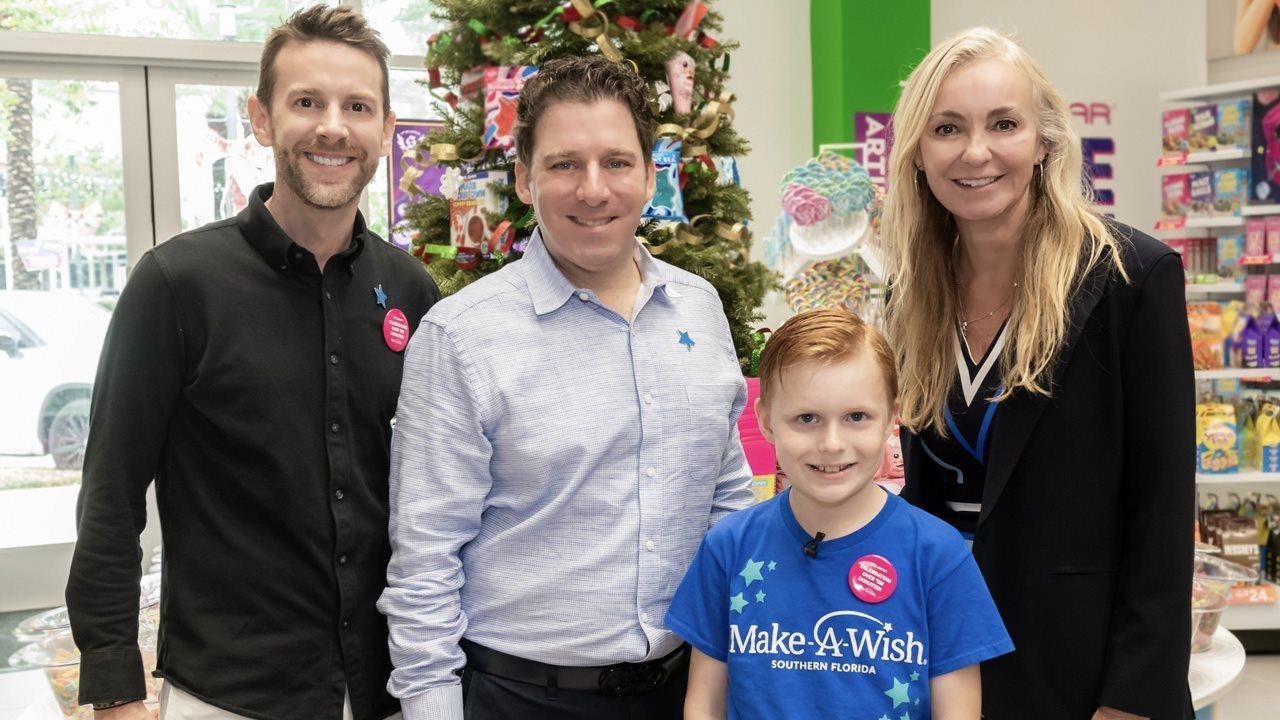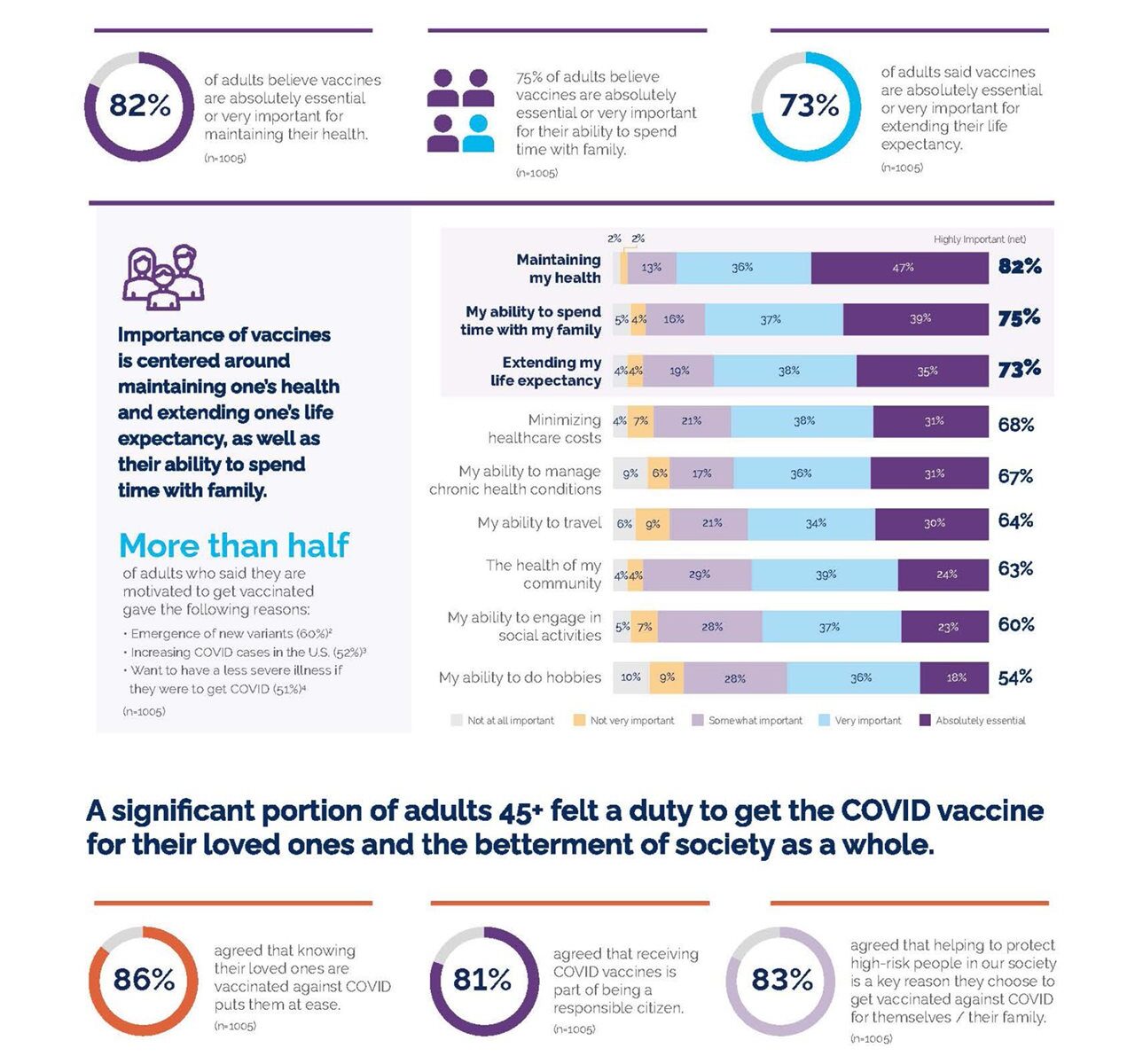2023-11-30T14:39:00
(BPT) – Sponsored by Alkermes, Inc.
By Pam, mother of a 31-year-old son living with schizophrenia
This sponsored story you are about to read may not be representative of all people living with schizophrenia. The opinions expressed here are those of Pam, a mother of a person living with schizophrenia, and are not a substitute for medical advice or judgement. Individual results may vary. Always talk to your doctor.
November is Caregiver Awareness Month and I’ve been reflecting on my role as a caregiver to my adult son. Of course, most mothers are caregivers; even when our children reach adulthood, we still care, we still want the best for them, and we still offer guidance when we can. In that way, my role is no different than that of millions of mothers around the world.
However, my caregiver role evolved when my son, now 31, was diagnosed with schizophrenia in 2013. I think most parents expect challenges—rebellious teenage years, disagreements about schoolwork, curfews, and dating. But few expect a diagnosis of schizophrenia, a chronic brain disorder that affects about 1.1% of the US population with symptoms that may include, but are not limited to, delusions, hallucinations, disorganized speech, trouble with thinking, and lack of motivation.1,2
Like everything else about parenthood, helping a child with schizophrenia came with a learning curve, and we’ve had easier days and hard days. So, I wanted to share some of the lessons, tools, and realizations that have helped our family along the way.
5 Lessons I’ve Learned in My Role as a Caregiver
1) It’s not personal. My son has a diagnosis, which is different than saying he is his diagnosis. I had to learn that the things he says and does are a result of his mental health condition, not who he is. Sometimes, he’s just having a bad day or a bad moment. Realizing that his behaviors are not aimed at me and that I don’t need to take them personally helps me choose compassion over frustration.
2) Take care of your own needs. I seek support regularly. I make time for things I enjoy, such as a massage, a manicure, or shopping for a cute pair of shoes. I go for a walk every day. I also find it important to set boundaries—with my job, my family, and myself. You give more or less of yourself to the parts of your life that need you and serve you, day by day.
3) Seek out information. Do research to help support loved ones through the journey. Meet other caregivers. It seems like when families face diagnoses in other disease states, we know what to do next. However, sometimes with a mental health diagnosis, we may not know how to proceed or where to turn for help. I believe as caregivers we may consider approaching mental and physical illnesses similarly, by asking questions, learning as much as possible, and taking action in partnership with healthcare providers.
4) Caregiving is a team sport. My son, his doctors, nurses, and I are in this together. I go to learning sessions from the National Alliance of Mental Illness. I write down everything at doctor visits. I can look back at notes from when he was first diagnosed and see some of the details I noted through our journey. I talk to his nurses about what symptoms I’m observing and what our treatment goals are, because they may see him during visits, but I’m with him all the time.
5) Find what works for you and your family. My son and I have learned together what works for us. From me helping with his meal prep, to him taking responsibility for chores around the house, to working through the good and bad days together. Every family is going to be different. It’s all a continual learning process.
And we’ve worked closely with his healthcare providers to find a treatment that’s working to help reduce his symptoms. For him, it is ARISTADA® (aripiprazole lauroxil), a prescription medicine given by injection into the muscle (intramuscular) by a healthcare professional and used to treat schizophrenia in adults.3 It is not known if ARISTADA is safe and effective in children under 18 years of age.3 This medication is available in five dosing regimens, including monthly (441 mg, 662 mg, 882 mg), every 6 weeks (882 mg), and every 2 months (1064 mg).3
Here is some important safety information about ARISTADA: ARISTADA may cause serious side effects, including an increased risk of death in elderly people with dementia-related psychosis.3 ARISTADA increases the risk of death in elderly people who have lost touch with reality (psychosis) due to confusion and memory loss (dementia).3 ARISTADA is not for the treatment of people with dementia-related psychosis.3 The most common side effects of ARISTADA include restlessness or feeling like you need to move (akathisia). These are not all of the side effects associated with ARISTADA.3 For additional Important Safety Information, please continue reading below.
Overall, I’ve learned to approach each moment with compassion and support. Schizophrenia is not something my son or I can control. As caregivers, we can help, but we can’t “fix” it. Through all the hills and valleys, I’ve learned not to give my energy to everything; I devote my energy to myself, my family, and my son.
This is intended as informational only and not a substitute for professional medical advice, diagnosis, or treatment. Always seek the advice of your physician or other qualified health provider with any questions you may have regarding a medical and/or mental health condition.
Please read the Important Safety Information for ARISTADA INITIO® (aripiprazole lauroxil) and ARISTADA below.
INDICATION and IMPORTANT SAFETY INFORMATION for ARISTADA INITIO® (aripiprazole lauroxil) and ARISTADA® (aripiprazole lauroxil) extended-release injectable suspension, for intramuscular use
INDICATION
ARISTADA INITIO is a prescription medicine given as a one-time injection and is used in combination with oral aripiprazole to start ARISTADA treatment, or re-start ARISTADA treatment after a missed dose, when ARISTADA is used for the treatment of schizophrenia in adults.
ARISTADA is a prescription medicine given by injection by a healthcare professional and used to treat schizophrenia in adults.
It is not known if ARISTADA INITIO and/or ARISTADA are safe and effective in children under 18 years of age.
IMPORTANT SAFETY INFORMATION
Elderly people with dementia-related psychosis are at increased risk of death when treated with antipsychotic medicines including ARISTADA INITIO and ARISTADA. ARISTADA INITIO and ARISTADA are not for the treatment of people who have lost touch with reality (psychosis) due to confusion and memory loss (dementia).
Contraindication: Do not receive ARISTADA INITIO or ARISTADA if you are allergic to aripiprazole or any of the ingredients in ARISTADA. Allergic reactions to aripiprazole have ranged from rash, hives and itching to anaphylaxis, which may include difficulty breathing, tightness in the chest, and swelling of the mouth, face, lips, or tongue.
ARISTADA INITIO and/or ARISTADA may cause serious side effects including:
- Cerebrovascular problems (including stroke) in elderly people with dementia-related psychosis that can lead to death.
- Neuroleptic malignant syndrome (NMS), a serious condition that can lead to death. Call your healthcare provider or go to the nearest hospital emergency room right away if you have some or all of the following signs and symptoms of NMS:
- high fever
- stiff muscles
- confusion
- sweating
- changes in pulse, heart rate, and blood pressure
- Uncontrolled body movements (tardive dyskinesia). ARISTADA INITIO and ARISTADA may cause movements that you cannot control in your face, tongue, or other body parts. Tardive dyskinesia may not go away, even if you stop receiving ARISTADA. Tardive dyskinesia may also start after you stop receiving ARISTADA.
- Problems with your metabolism such as:
- High blood sugar (hyperglycemia). Increases in blood sugar can happen in some people who receive ARISTADA INITIO and/or ARISTADA. Extremely high blood sugar can lead to coma or death. If you have diabetes or risk factors for diabetes (such as being overweight or a family history of diabetes), your healthcare provider should check your blood sugar before you receive ARISTADA INITIO and/or ARISTADA and during your treatment with ARISTADA.
- Call your healthcare provider if you have any of these symptoms of high blood sugar:
- feel very thirsty
- need to urinate more than usual
- feel very hungry
- feel weak or tired
- feel sick to your stomach
- feel confused, or your breath smells fruity
- Increased fat levels (cholesterol and triglycerides) in your blood
- Weight gain. You and your healthcare provider should check your weight regularly.
- Unusual and uncontrollable (compulsive) urges. Some people taking aripiprazole have had strong unusual urges such as gambling that cannot be controlled (compulsive gambling). Other compulsive urges include sexual urges, shopping, and eating or binge eating. If you or your family members notice that you are having unusual strong urges, talk to your healthcare provider.
- Decreased blood pressure (orthostatic hypotension). You may feel lightheaded or faint when you rise too quickly from a sitting or lying position.
- Falls. ARISTADA INITIO and ARISTADA may make you sleepy or dizzy when standing which may make you at risk for falls and related injuries
- Low white blood cell count
- Seizures (convulsions)
- Problems controlling your body temperature. Avoid becoming too hot or dehydrated. Do not exercise too much. In hot weather, stay inside in a cool place if possible. Stay out of the sun. Do not wear too much clothing or heavy clothing. Drink plenty of water.
- Difficulty swallowing
The most common side effects of ARISTADA INITIO and ARISTADA include restlessness or feeling like you need to move (akathisia). These are not all the possible side effects of ARISTADA INITIO and ARISTADA. You should tell your HCP about any side-effects you have.
Do not drive, operate hazardous machinery, or do other dangerous activities until you know how ARISTADA INITIO and ARISTADA affect you. ARISTADA INITIO and ARISTADA may affect your judgment, thinking or motor skills.
Before receiving ARISTADA INITIO and ARISTADA tell your healthcare provider about all of your medical conditions, including if you:
- have not taken Abilify®, Abilify Maintena®, or any aripiprazole product before
- have or had heart problems or a stroke
- have diabetes or high blood sugar or a family history of diabetes or high blood sugar. Your healthcare provider should check your blood sugar before you receive ARISTADA INITIO and/or ARISTADA or during your treatment with ARISTADA
- have or had low or high blood pressure
- have or had seizures (convulsions)
- have or had a low white blood cell count
- have problems that may affect you receiving an injection in your buttocks or your arm
- are pregnant or plan to become pregnant. It is not known if ARISTADA INITIO and/or ARISTADA will harm your unborn baby. If you become pregnant while taking ARISTADA INITIO and/or ARISTADA, talk to your healthcare provider about registering with the National Pregnancy Registry for Atypical Antipsychotics. You can register by calling 1-866-961-2388, or visit http://womensmentalhealth.org/clinical-and-research-programs/pregnancyregistry/
- are breastfeeding or plan to breastfeed. ARISTADA INITIO and/or ARISTADA can pass into your breast milk. It is not known if it may harm your baby. Talk to your healthcare provider about the best way to feed your baby if you receive ARISTADA INITIO and/or ARISTADA.
Tell your healthcare provider about all the medicines you take, including prescription and over-the-counter medicines, vitamins, and herbal supplements. ARISTADA INITIO and ARISTADA and other medicines may affect each other causing possible serious side effects. Do not start or stop any medicines after you receive ARISTADA INITIO and ARISTADA without talking to your healthcare provider first.
If you have any questions about your health or medicines, talk to your healthcare provider. You are encouraged to report all side effects of prescription drugs to the FDA. Visit www.fda.gov/medwatch, or call 1-800-FDA-1088.
Please see full Prescribing Information for ARISTADA INITIO and ARISTADA, including Boxed Warning, and Medication Guides for ARISTADA INITIO and ARISTADA.
References:
1 Cloutier M, Aigbogun MS, Guerin A, et al. The economic burden of schizophrenia in the United States in 2013. J Clin Psychiatry. 2016;77(6):764-771.
2 What is schizophrenia? American Psychiatric Association. Accessed October 1, 2023. https://www.psychiatry.org/patients-families/schizophrenia/what-is-schizophrenia
3 ARISTADA. Prescribing Information. Alkermes, Inc.; 2021.
ALKERMES® is a registered trademark of Alkermes, Inc. and ARISTADA® and ARISTADA INITIO® are registered trademarks of Alkermes Pharma Ireland Limited, used by Alkermes, Inc., under license.
Abilify® and Abilify Maintena® are registered trademarks of Otsuka Pharmaceutical Co. Ltd.
©2023. Alkermes, Inc. All rights reserved. ARI-005129











